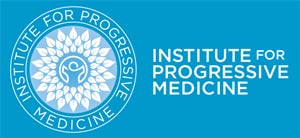Joint replacement surgery of the hip and knee is performed on nearly one million people in the United States every year. The number rises as the population ages. Many individuals have had more than one joint replaced, and I have seen patients who have had three or four joint replacement procedures.
Surgery replaces the joint, but does not correct degenerative changes involving the tendons and ligaments that support the joint, or the imbalance of muscles and postural abnormalities that are the major cause of joint degeneration.
Orthopedic surgeons prefer to perform joint replacement when the patient is older and has less than 20 years of life remaining. That is because artificial joints wear out within 20 years and have to be replaced, and the second operation is often much more difficult than the first.
The most important question is whether the joint really requires replacement. X-rays reveal a loss of joint space between bones, indicating a loss of cartilage. MRIs reveal cartilage degeneration. Patients are often told they are “bone on bone,” meaning the bones are rubbing on each other because the cartilage has disappeared. This argument persuades many to accept joint replacement. Usually, however, some cartilage remains and the patient is not “bone on bone.”
Joint replacement surgery often is not truly necessary, and patients can reduce pain and improve mobility using other approaches. A recent article on overuse of medical services (Lancet, July 8, 2017) indicates that 34% of knee replacements in the United States are unnecessary. There is regional variation in the rates of total hip and knee replacement procedures, with some areas of the country 5 times more likely to do these procedures than other areas. I have seen many patients who were told years ago that they needed joint replacement, and are functioning well without surgery.
What are the alternatives?

In our practice we employ injection therapies routinely. Prolotherapy with ozone and platelet rich plasma effectively reduce inflammation and build new tissue in cartilage, ligaments and tendons. We always employ ultrasound to visualize sites of tissue damage, and to perform injections. You can see the needle within the tissue, so there is no doubt where the injection is going. Ultrasound allows for a more exact and thorough treatment. Most patients experience improvement, and sometimes complete resolution of pain.
The most powerful non-surgical treatment utilizes biocellular materials, commonly referred to as “stem cells.” Under local anesthesia, fat is extracted from the patient’s abdomen or flanks, and processed to separate growth factors and undifferentiated cells. These materials, the bricks and mortar of tissue regeneration, are combined with platelet rich plasma and injected into the defects identified on ultrasound. Usually improvement occurs over the next 4-6 months, as the injected materials continue their work.
We have seen excellent results with these regenerative treatments. Injections can be repeated to give further recovery. I have had about a dozen treatments in my left knee over the last five years. The last two were regenerative cell injections given two years apart. Despite cartilage degeneration and a torn medial meniscus on MRI five years ago, I can walk for miles and go up and down stairs without pain. To me that is far preferable to knee replacement surgery with a long and painful rehabilitation program.
Allan Sosin, MD


